Key Takeaways
Single AI agent vs multi-agent system: One works independently; the other collaborates for complex goals.
For startups: Single-agent systems are faster, simpler, and more affordable to build.
For enterprises: Multi-agent systems boost scalability, precision, and real-time decision-making.
Smart growth: Start with a single agent and scale to multi-agent as operations expand.
Better ROI: Single-agent saves costs early; multi-agent delivers higher long-term value.
JPLoft advantage: Build powerful AI agents tailored to your business needs with JPLoft.
"The best way to predict the future is to invent it." — Alan Kay
This quote defines how innovation fuels progress in the world of artificial intelligence. As businesses increasingly rely on automation, one crucial question emerges: Which is better, a Single AI Agent System vs a multi-agent System?
A single AI agent handles tasks independently, while a multi-agent system involves several agents working together to solve complex challenges.
Understanding the difference helps investors and entrepreneurs make smarter technology choices. Single-agent systems offer simplicity, speed, and lower costs, perfect for startups or focused operations.
Multi-agent systems, on the other hand, bring scalability, collaboration, and intelligence sharing, ideal for enterprises managing multi-layered workflows.
By grasping these distinctions, decision-makers can align the right AI architecture with their business vision and drive lasting innovation and growth.
Now, let’s understand the details here.
An Overview of a Single AI Agent System
If you are excited to learn the difference between a Single AI agent system vs a multi-agent system, let’s begin with a single AI Agent system first.
1. What is a Single AI Agent System?
A single-agent system architecture is an intelligent system with a single entity that perceives its environment, makes logical decisions, reasons, and acts to achieve its goals.
Additionally, a single AI agent system is an autonomous model where one agent performs all the different tasks independently. This system observes data, makes decisions, and executes actions without coordination from other agents.
Such a setup is ideal for simple, goal-specific workflows, including chatbots, appointment schedulers, or basic automation tools.
2. How Does a Single AI Agent System Work?
Before you decide to build an AI agent, let’s evaluate the procedure for how it works.
Step 1: Perception
The agent receives information from its surroundings through sensors, APIs, or user input to become aware of the situation.
Step 2: Processing
It processes the gathered information via algorithms or machine learning models to infer patterns or user intention.
Step 3: Decision-Making
Based on its interpretation, the agent chooses the most appropriate action or response to meet its specified objective.
Step 4: Action Execution
The agent carries out the desired action, such as sending a response, producing output, or activating an automation.
Step 5: Learning and Optimization
With time, the agent fine-tunes its replies in response to feedback or fresh information, being more accurate and efficient.
3. Features of Single AI Agent Systems
The best AI agent features will help you attract the attention of users and enhance the overall capability of the app.
Here is a table to check for the features of single AI agent systems, below.
|
Feature |
Description |
|
Autonomy |
Operates independently without needing to coordinate with other agents. |
|
Goal-Oriented Behavior |
Designed to achieve a specific task or objective efficiently. |
|
Simplicity |
Has a straightforward architecture, making it easier to build and maintain. |
|
Limited Scope |
Works within defined boundaries and handles one function at a time. |
|
Fast Decision-Making |
Processes information quickly since it doesn’t rely on other agents for collaboration. |
4. Pros of Using Single AI Agent Systems
Here is the list of the benefits of using single AI agent systems.
-
Easy to Develop and Deploy – Less setup and coding required, making it great for rapid implementations or MVPs.
-
Low Maintenance – There are fewer components, so fewer opportunities for system glitches and simpler updates.
-
Cost-Effective – Low infrastructure and resource requirements reduce overall development costs.
-
Faster Execution – Because only one agent processes all functions, responses, and decisions occur swiftly.
-
Best for Simple Workflows – Suitable for businesses that require dedicated automation, such as chatbots or task schedulers.
5. Cons of a Single AI Agent System
The list of limitations will help you identify what a single AI agent system cannot perform.
-
Limited Scalability – Can't support multiple or complicated tasks concurrently.
-
Limited Learning Scope – Has no cooperation, which reduces exposure to different data and ideas.
-
Single Point of Failure – If the agent fails, the whole system comes crashing down, as there are no backup agents.
-
Harder to Expand – New features tend to necessitate a complete overhaul of the entire system.
-
Less Adaptable – Has a problem handling dynamic environments or multi-domain decision-making.
Real-World Case Studies of a Single AI Agent System
Real-world case studies can help gain the facts and practical applications of single AI systems. Let’s have a glance.
1. Customer Support Chatbots
Drift and Intercom utilize individual AI agents to handle customer inquiries on an automated basis.
Such bots process customer intent independently, respond quickly, and transfer the case when it is required, enhancing response time and minimizing the workload of the support team.
2. Virtual Personal Assistants
Virtual assistants like Siri or Alexa (in standalone skill mode) behave like individual agents when executing isolated tasks such as reminders or weather updates.
They accept input, make decisions, and issue commands within their specified capability.
3. Recommendation Engines Driven by AI
Single-agent logic is employed by streaming services such as Spotify or Netflix (per-user model) to personalize the content.
Single agents learn from specific user behavior and suggest songs or TV shows for a given user based on preferences.
4. Intelligent Scheduling Systems
Calendly or Google Assistant's meeting scheduler application uses a single agent to handle calendar appointments.
The agent manages user inputs, checks for availability, and confirms meetings independently without the use of multi-agent interaction.
An Overview of Multi-Agent Systems
Now, let's consider an overview of multi-agent systems, below.
1. What is a Multi AI Agent System?
A Multi AI Agent System (MAS) is a system consisting of many intelligent agents collaborating to accomplish a common objective.
Independent in nature, each agent performs a single function, such as data gathering, analysis, or decision-making, while interacting and coordinating with one another to solve intricate challenges more effectively.
These agents may work together, compete, or coordinate based on the design of the task. For instance, one agent may interpret user intent, another responds, and a third verifies accuracy or relevance.
In short, a Multi AI Agent System acts like an intellectual digital team; every agent works to do its own thing, yet collectively, they produce smarter, faster, and more scalable results than any solitary AI agent could.
2. How Does a Multi-AI Agent System Work?
Let’s consider the list of working procedures below.
Step 1: Agent Initialization
Every agent has a unique goal or task assigned to it (e.g., one does data input, another does processing). These agents work separately but are linked to one another in the same system.
Step 2: Perception and Data Gathering
Agents gather data from their surroundings or other agents in order to grasp the current scenario and context first before they act.
Step 3: Communication and Coordination
Agents share information, commands, or commands using specified communication protocols. This cooperation keeps all agents working towards the shared objective.
Step 4: Task Allocation and Execution
Tasks are allocated among agents according to their specialization or function. Every agent acts upon its role and exchanges outcomes with others to integrate them.
Step 5: Decision Integration
A supervisory or coordinating agent (at times referred to as a master agent) integrates all outputs to create a single solution or decision.
Step 6: Learning and Optimization
As time progresses, agents learn from others' performance and feedback cycles, enhancing coordination, accuracy, and task efficiency.
3. Features of Multi AI Agent Systems
You can consider the features of multi-agent systems below.
|
Feature |
Description |
|
Autonomy |
Each agent operates independently, making its own decisions based on assigned goals. |
|
Collaboration |
Agents work together, share data, and coordinate actions to achieve a common objective. |
|
Specialization |
Every agent is designed for a specific role or task, improving efficiency and accuracy. |
|
Communication |
Agents exchange information through structured protocols to stay synchronized. |
|
Scalability |
New agents can be added easily without disrupting the existing system. |
|
Adaptability |
Agents adjust to changes in the environment or data, maintaining consistent performance. |
|
Distributed Problem-Solving |
Tasks are divided among agents, allowing faster processing and better load management. |
|
Learning Capability |
Agents learn individually or collectively to enhance future decision-making. |
4. Pros of Using Multi-AI Agent Systems
Here is the list of benefits to be considered.
-
Greater Scalability – Additional agents can be introduced to perform new tasks or workloads without redesigning the system.
-
Parallel Processing of Tasks – Agents operate in parallel, accelerating intricate operations and increasing efficiency.
-
Enhanced Precision – Specific agents specialize in unique roles, minimizing mistakes and yielding more accurate results.
-
Improved Fault Tolerance – In case an agent fails, others are able to carry on, maintaining the system's stability.
-
Collaborative Intelligence – Agents exchange information and knowledge, resulting in wiser, context-sensitive decisions.
5. Cons of a Multi-Agent System
Every aspect has its own limitations; let's consider them all below.
-
Complex Architecture – Management and communication among many agents adds development complexity.
-
High Resource Consumption – Execution of several agents in parallel demands greater computing power and storage.
-
Coordination Challenges – Synchronizing the agents and avoiding interference in common tasks proves challenging.
-
Maintenance Overhead – Debugging, scaling, and updating a distributed network of agents requires additional time and expense.
-
Risk of Communication Failure – If a single agent fails or transmits erroneous data, it may impact the performance of the whole system.
Real-World Case Studies of a Multi-Agent System
If you want to select the best AI agent frameworks, it is essential to learn the practical case scenarios.
The real-world case studies can be helpful in depicting the practical life circumstances. Let’s consider them all below.
1. Autonomous Vehicle Coordination – Tesla & Waymo
In autonomous environments, every vehicle is an independent agent with the ability to perceive, navigate, and make decisions.
The multi-agent systems (MAS) interact with other vehicles and infrastructure (such as road sensors or traffic lights) to prevent accidents, plan routes in real-time, and control traffic flow.
Impact: Multi-agent coordination prevents congestion, enhances safety, and supports real-time decision-making for autonomous vehicle fleets.
2. Smart Energy Grids – Siemens and General Electric
In intelligent grid systems, agents control various aspects of the energy grid, power generation, transmission, and consumption.
Each agent keeps track of its local world (such as load, use, or failures) and cooperates with others to match demand and supply in real time.
Effect: MAS enhances energy efficiency, minimizes outages, and facilitates predictive maintenance in mass-scale grids.
3. Financial Trading Systems – JPMorgan & Goldman Sachs
Multi-agent frameworks are used by financial institutions for algorithmic trading and high-frequency trading.
Agents read market information, forecast trends, and make trades while communicating with other agents to reduce risk and maximize profit.
Effect: MAS facilitates quicker, wiser, and decentralized decision-making for intricate market situations.
4. Logistics and Supply Chain Optimization – Amazon Robotics
Amazon fulfillment centers employ MAS-based robotic systems, with each robot serving as an agent.
They communicate to transport inventory, prevent collisions, and optimize warehouse operations in concert.
Impact: Improved operational efficiency, shorter delivery times, and negligible human intervention in repetitive tasks.
5. Disaster Response & Rescue Operations – NASA and UN Drones
Multi-agent drone systems are employed for real-time mapping and disaster response.
Every drone (agent) scans a distinct area, exchanges live data, and plans routes to avoid duplication.
Impact: Quicker search-and-rescue operations, enhanced situational awareness, and safer missions in danger zones.
6. Healthcare Systems – Distributed Patient Monitoring
MAS is applied in monitoring patient data within hospitals and telemedicine systems.
Vitals tracking, emergency notification, and medical data transmission to specialists are performed by various agents.
Effect: Facilitates proactive treatment, early detection of anomalies, and enhanced coordination between physicians.
Now, let’s evaluate a detailed comparison of a single AI agent system Vs a Multi-agent system in the section below.
Single AI Agent vs Multi-Agent System: A Detailed Comparison
The single AI agent system provides a single entity that perceives its environment and makes logical decisions to attain goals. On the other hand, a multi-agent system comprises different AI agents collaborating to accomplish a common objective.
Let’s learn the complete differences in detail, below.
1. Architecture
► Single AI Agent System:
-
Operates via a centralized design, where one agent handles all tasks sequentially.
-
Simpler to implement as there are no dependencies or communication layers.
-
Well-suited to lightweight applications with quick execution time and minimal setup.
-
System logic is linear, and data moves from input to output through one intelligence core.
► Multi-AI Agent System:
-
Based on a distributed platform where multiple agents work together.
-
Each agent has assigned responsibilities and communicates through communication protocols.
-
Supports concurrent task execution, enhancing efficiency for sophisticated systems.
-
More fault-tolerant and scalable, but it needs strong coordination and orchestration logic.
2. Task Handling
► Single AI Agent System:
-
Processes one goal-seeking process at a time (e.g., responding to queries, planning tasks).
-
Cannot perform multitasking or handle multiple domains concurrently.
-
Operates optimally in rule-based and predictable environments.
-
Simplicity guarantees a fast response but restricts flexibility.
► Multi-AI Agent System:
-
Breaks large tasks into several agents operating in parallel.
-
Each agent performs a unique subtask (response generation, reasoning, data analysis).
-
Ideal for dynamic or changing environments where cooperation is important.
-
Supports hierarchical or cooperative workflows, enhancing overall task effectiveness.
3. Decision-Making Process
► Single AI Agent System:
-
Works with one decision-making model.
-
It is based on explicit rule-based or ML-based logic to react to the input data.
-
All the intelligence resides in a single system, establishing a center of reasoning.
-
Missing is collective judgment, which can restrict flexibility to intricate problems.
► Multi-AI Agent System:
-
Decisions are localized based on the knowledge and function of each agent.
-
Agents exchange insights to construct a combined decision framework.
-
Facilitates distributed problem-solving, quicker and more robust outcomes.
-
May contain a master or coordinating agent to combine all decisions.
4. Communication and Collaboration
► Single AI Agent System:
-
Operates independently with no inter-agent communication required.
-
Interacts with users or external systems only, not other agents.
-
Easier debugging and tracing as all information flows through a single point.
-
No collaboration features, cannot share or delegate work.
► Multi-AI Agent System:
-
Agents constantly communicate to exchange data, progress, and decisions.
-
employs message-passing or API-based communication protocols.
-
Collaboration facilitates decomposition of the problem and synchronization of tasks.
-
Successful cooperation results in self-organization and adaptability with varying inputs.
5. Scalability and Performance
► Single AI Agent System:
-
Not scalable, increasing the capabilities would necessitate re-engineering.
-
Performs well for small-scale or repetitive tasks.
-
Performance can suffer if overloaded with varied functions.
-
Best suited for situations where simplicity is greater than expansion.
► Multi-AI Agent System:
-
Extremely scalable, new agents can be introduced without impacting current ones.
-
Manages complicated, large-volume workloads effectively.
-
Performance enhances with distributed computation and specialization.
-
Best for companies anticipating future growth or multi-department automating.
6. Cost and Maintenance
► Single AI Agent System:
-
Low development cost and quicker implementation schedule.
-
Easy maintenance because only one agent's logic requires updating
-
Well-suited for startups or MVPs that require cost-effective automation.
-
Upgrading has limited potential; growing means creating a new building.
► Multi-AI Agent System:
-
Increased initial outlay because of the multi-agent architecture and framework.
-
Maintenance is complicated because updates should not interfere with agent coordination.
-
Long-term ROI is greater due to the scalability and reusability of the system.
-
Well-suited for large organizations with many integrated processes and massive datasets.
7. Reliability and Fault Tolerance
► Single AI Agent System:
-
Low fault tolerance: the system halts when the agent fails.
-
Easier to debug but has few recovery alternatives.
-
Highly appropriate for low-risk work, with downtime not being a priority.
-
Completely dependent on one logic core, a single point of failure threat.
► Multi-AI Agent System:
-
High fault tolerance, an agent can resume activities from another.
-
Continuous system running even as individual agents fail.
-
There are redundancy mechanisms for constant service.
-
Critical for mission-critical or real-time processes such as logistics or finance.
8. Learning and Adaptability
► Single AI Agent System:
-
Learns based on own experiences or user interaction alone.
-
Limited adaptability to predefined learning models alone.
-
Cannot exchange knowledge or strategies outside its realm.
-
Does best in static, rule-based environments.
► Multi-AI Agent System:
-
Individual and collective learning by agents enhances team intelligence.
-
Shared learning enables faster adaptability to new environments.
-
Can dynamically evolve strategies using feedback loops.
-
Perfect for sophisticated, data-intensive setups that need to constantly get better.
9. Use Cases
► Single AI Agent System:
-
Customer service chatbots.
-
Virtual personal assistants (e.g., reminders through Siri).
-
Appointment and invoice processors.
-
Single-user recommendation engines.
► Multi-AI Agent System:
-
Smart grids and autonomous networks of vehicles.
-
Enterprise multi-department automation.
-
Warehouse robots and supply chain management.
-
Large-scale financial modeling and analytics.
Here is the table summary to consider for understanding the difference between single AI agents Vs multi-agent systems.
|
Aspect |
Single AI Agent System |
Multi-AI Agent System |
|
Definition |
Involves one autonomous agent performing all tasks independently. |
Involves multiple agents working together, each specialized in specific roles. |
|
Architecture |
Centralized structure where one agent manages the entire process. |
Distributed architecture with multiple interconnected agents coordinating tasks. |
|
Complexity |
Simple to design, develop, and maintain. |
Complex due to agent coordination, communication, and synchronization. |
|
Collaboration |
No collaboration, the agent works in isolation. |
High collaboration — agents share data and decisions to achieve a common goal. |
|
Task Handling |
Best for simple, single-purpose tasks like chatbots or schedulers. |
Suitable for complex, multi-step, or large-scale workflows involving multiple domains. |
|
Scalability |
Limited — adding more functions requires redesigning the system. |
Highly scalable — new agents can be added without major restructuring. |
|
Communication |
No internal communication is needed since only one agent operates. |
Requires inter-agent communication protocols for coordination. |
|
Decision-Making |
Centralized and linear decision-making process. |
Decentralized — agents make local decisions that contribute to a collective outcome. |
|
Fault Tolerance |
Low — if the single agent fails, the entire system stops. |
High — failure of one agent can be compensated by others. |
|
Performance |
Faster for focused tasks since there’s no coordination delay. |
More efficient for large-scale operations due to parallel processing. |
|
Learning Ability |
Learns from its own data and feedback only. |
Agents can learn individually and collectively, improving shared intelligence. |
|
Resource Requirement |
Requires fewer computational resources. |
Demands more resources for processing, communication, and data exchange. |
|
Development Cost |
Lower initial cost; ideal for startups and small businesses. |
Higher investment due to multi-agent coordination and infrastructure needs. |
|
Maintenance |
Easier and cheaper to maintain. |
Complex maintenance due to dependencies among agents. |
|
Use Cases |
Chatbots, personal assistants, appointment booking, and single-task automation. |
Smart grids, autonomous vehicles, logistics optimization, financial trading, and multi-domain AI systems. |
|
Best For |
Businesses need simple, single-function AI solutions. |
Enterprises require scalable, adaptive, and collaborative AI ecosystems. |
After covering the differences, the next point to evaluate is understanding what is right for your business. Let’s learn them all in the following section.
What’s Right for Your Business: Single AI Agent Or Multi-Agent System?
When you wish to convert the top AI agent project ideas into reality. It is important what kind of AI agent system is written for your business.
Let’s learn about the key points, stating what is right for your business, below.
1. When a Single AI Agent System Is the Best Fit
Single-agent systems are ideal for startups, small enterprises, and businesses that seek to automate one workflow or a single function.
They need less investment, quicker development, and easy maintenance, which makes them best suited for initial-stage digital transformation.
You should choose a Single AI Agent System if your business:
-
Has one repetitive procedure, such as lead generation, customer service, or appointment booking.
-
Requires a voice assistant or chatbot to manage customer questions or FAQs.
-
Works in a niche market where automation benefits one vertical rather than the whole business.
-
Needs a fast-to-deploy solution with little infrastructure or technical overhead.
-
Wishes to experiment with AI adoption before scaling to multi-agent architectures.
Examples:
-
A salon appointment booking platform automates appointments.
-
A healthcare startup providing symptom-based chat support.
-
A local delivery business using AI to track orders or send notifications.
-
A real estate brokerage utilizing an AI bot for lead qualification.
2. When a Multi-AI Agent System is the Better Choice?
Multi-agent systems are ideal for medium to large companies or data-centric businesses spread across various functions.
They process sophisticated, multi-step tasks with cooperation between specialized AI agents, similar to departments in an actual company.
When it's about single artificial agent systems Vs multi-agent systems, you should have a Multi-AI Agent System if your company:
-
Requires AI-based coordination among several departments (e.g., sales, logistics, finance, marketing).
-
Handles big data sets with distributed analysis and decision-making.
-
Works in real-time situations such as transport, fintech, or IoT, where agents have to act concurrently.
-
Plans to extend AI usage across various workflows or combine several intelligent modules.
-
Seeks autonomous decision-making, optimization, and predictive insights across systems.
Examples:
-
An eCommerce retailer making use of several agents for inventory, order management, and personalization.
-
A fleet management company that coordinates routes, fuel, and delivery agents.
-
A financial technology platform whose agents are responsible for fraud detection, loan granting, and credit scoring.
-
A medical network of diagnostic, monitoring, and record-management agents.
A summary table that provides a brief on what is best and for which business.
|
Business Type / Use Case |
Recommended AI Agent System |
Reason / Goal |
|
Small startups (e.g., salons, local services) |
Single AI Agent System |
Handles focused automation tasks quickly and cost-effectively. |
|
Customer support platforms |
Single AI Agent System |
Manages repetitive queries or ticketing efficiently. |
|
E-commerce platforms |
Multi-AI Agent System |
Coordinates inventory, recommendations, and logistics agents simultaneously. |
|
Logistics and transportation companies |
Multi-AI Agent System |
Enables route planning, tracking, and delivery optimization via specialized agents. |
|
Fintech and banking firms |
Multi-AI Agent System |
Supports fraud detection, transaction analysis, and automated decisions. |
|
Healthcare and telemedicine startups |
Multi-AI Agent System |
Integrates diagnostic, patient-monitoring, and scheduling agents. |
|
SaaS or enterprise automation tools |
Multi-AI Agent System |
Scales across departments with collaborative agent workflows. |
|
Niche apps (chatbots, booking, reminders) |
Single AI Agent System |
Provides quick automation for single-purpose interactions. |
In short
-
Opt for a Single AI Agent System if speed, ease, and cost are your objectives.
-
Opt for a Multi-AI Agent System if scalability, intelligence sharing, and enterprise-wide automation are your objectives.
Connect with JPLoft and Build Your Own AI Agent
If you’re ready to bring intelligence, automation, and scalability to your business, JPLoft can help you make it happen.
As a leading AI agent development company, we specialize in designing both single-agent and multi-agent systems tailored to your business goals.
Whether you want a smart chatbot to handle customers or a multi-agent setup that manages logistics, finance, and marketing together, our team delivers it with precision.
At JPLoft, we combine deep technical expertise with real-world business understanding to build AI agents that think, learn, and act autonomously. From strategy to deployment, we ensure your system enhances productivity and reduces manual effort.
Let’s turn your vision into an intelligent, automated reality. Partner with JPLoft today and start building the AI solution that fits your business perfectly.
Conclusion
Both Single AI Agent Systems and Multi-AI Agent Systems bring unique advantages depending on a business’s goals and scale.
Single-agent systems work best for startups or small organizations looking to automate a single process quickly and cost-effectively.
In contrast, multi-agent systems empower enterprises to handle complex, interconnected workflows through collaboration and scalability.
The future of automation lies in blending both, starting simple, then expanding intelligently.
FAQs
A single AI agent operates independently and handles one task or goal, while a multi-agent system consists of multiple agents working collaboratively. The former suits simpler applications like chatbots, whereas the latter powers complex solutions like logistics networks, autonomous vehicles, or enterprise automation systems.
A single AI agent system is more affordable and faster to develop, making it ideal for startups or small businesses. It automates focused tasks such as customer support or scheduling without heavy infrastructure or complex architecture. Multi-agent systems, while powerful, require greater investment and longer development time.
Yes. Many businesses start with a single agent to test automation, then gradually expand into a multi-agent setup. This transition involves redesigning architecture, defining communication protocols, and integrating specialized agents that handle different tasks collaboratively while maintaining the original agent’s purpose.
Multi-agent systems are best for industries requiring collaboration, scalability, and real-time decision-making, like logistics, e-commerce, finance, healthcare, and autonomous technology. They enable multiple AI agents to coordinate across departments, analyze data, and make distributed decisions that enhance overall efficiency and accuracy.
The key challenges include complex communication, high resource usage, maintenance overhead, and risk of coordination failures. Managing data exchange between multiple agents requires a strong architecture and testing. However, when implemented correctly, multi-agent systems outperform single-agent models in adaptability and performance.





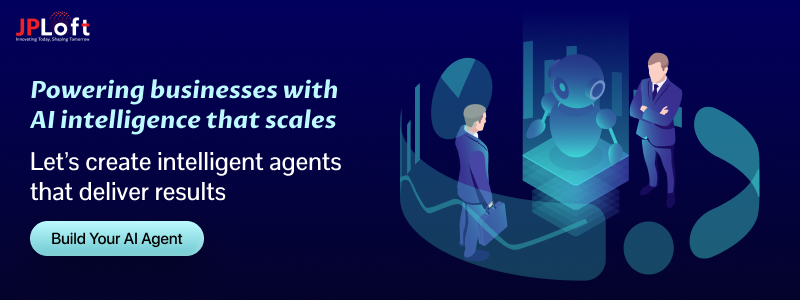
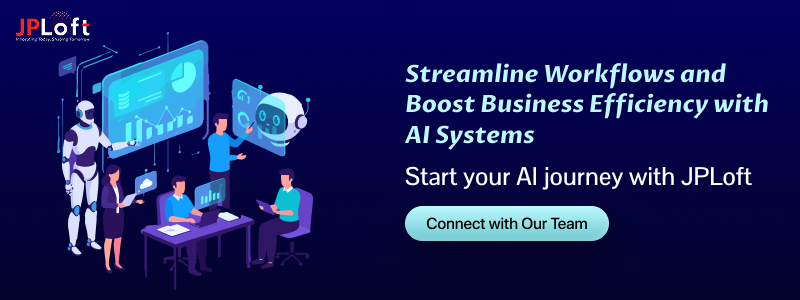

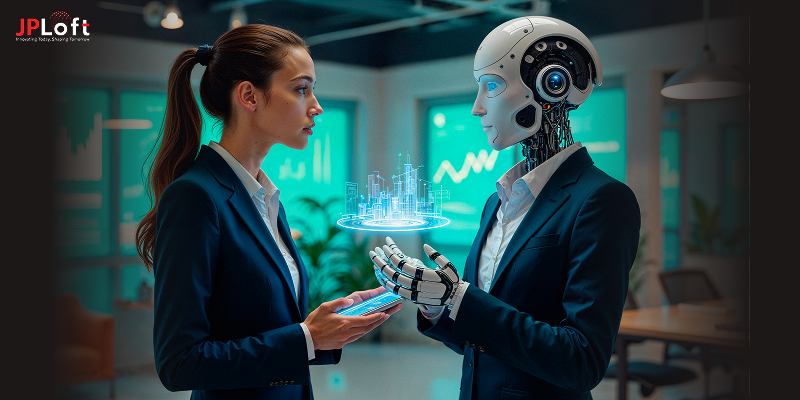
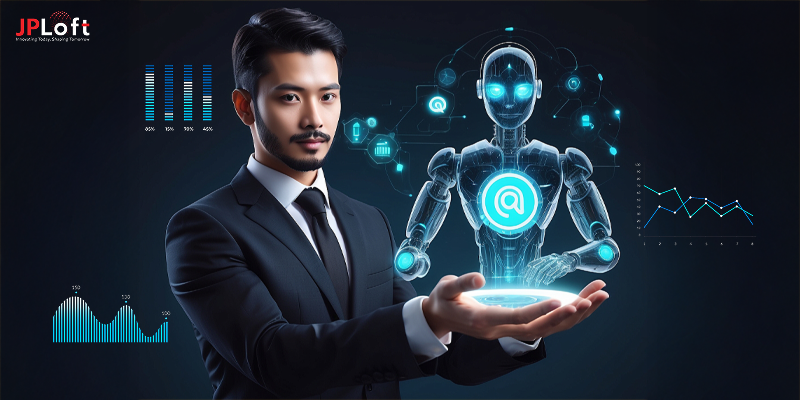
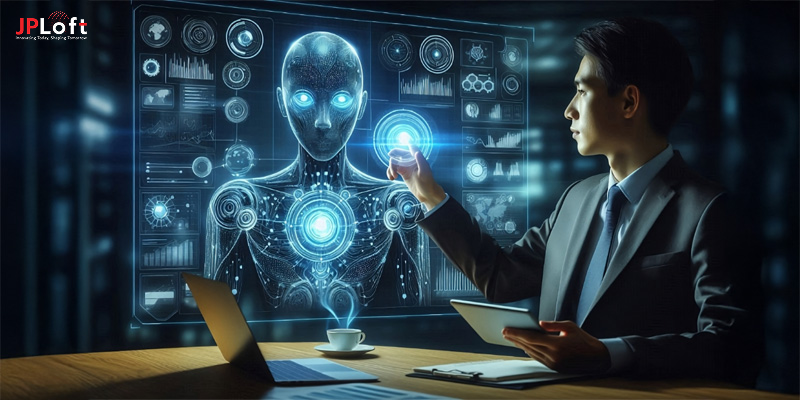


Share this blog